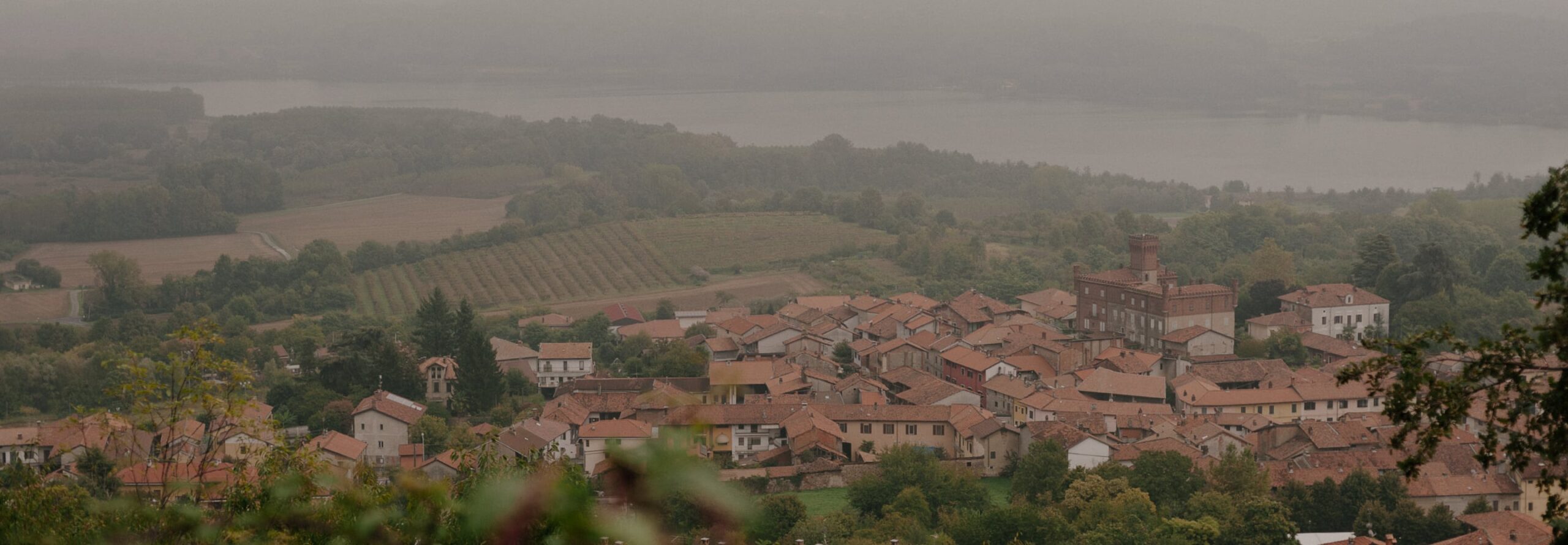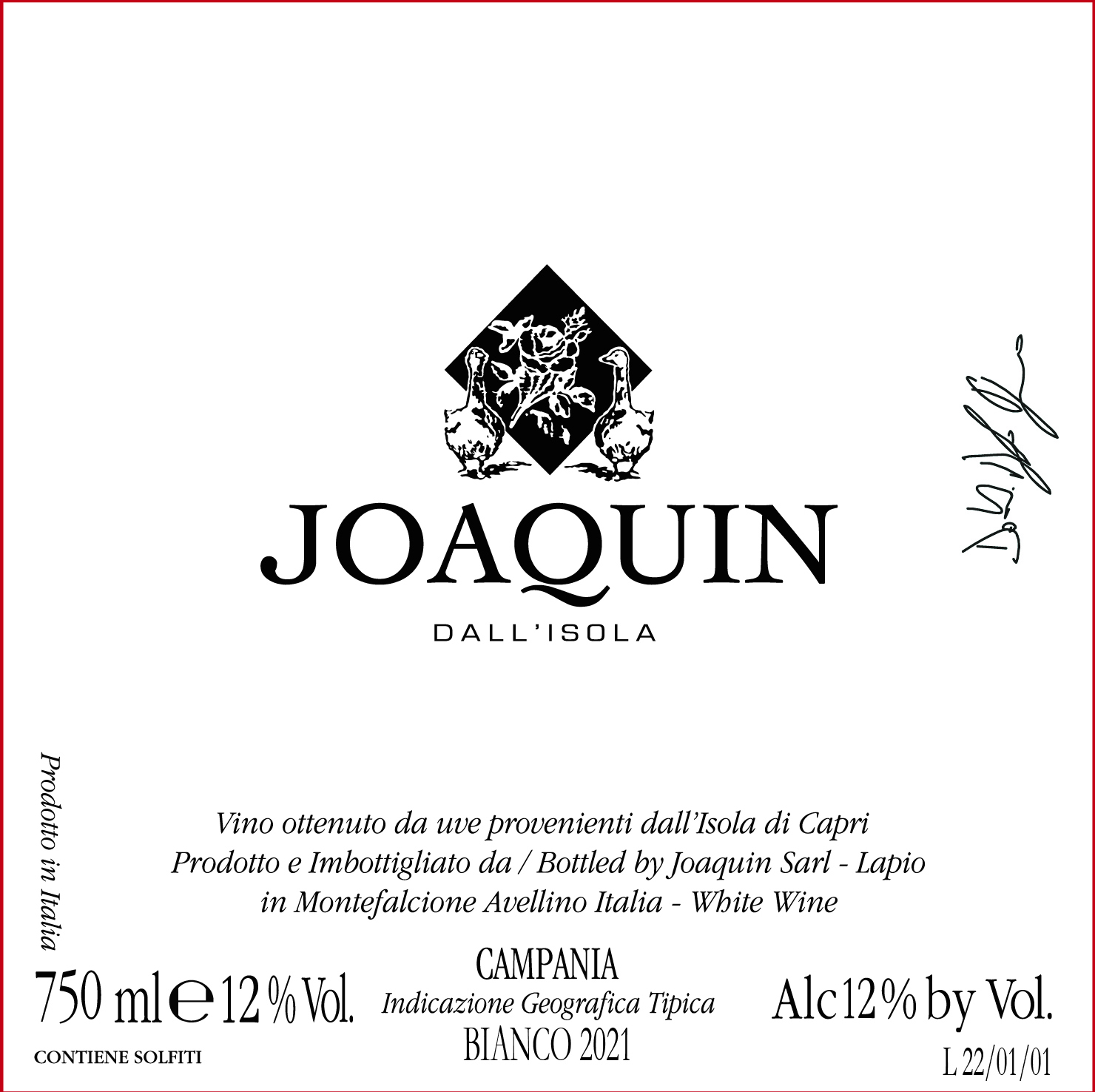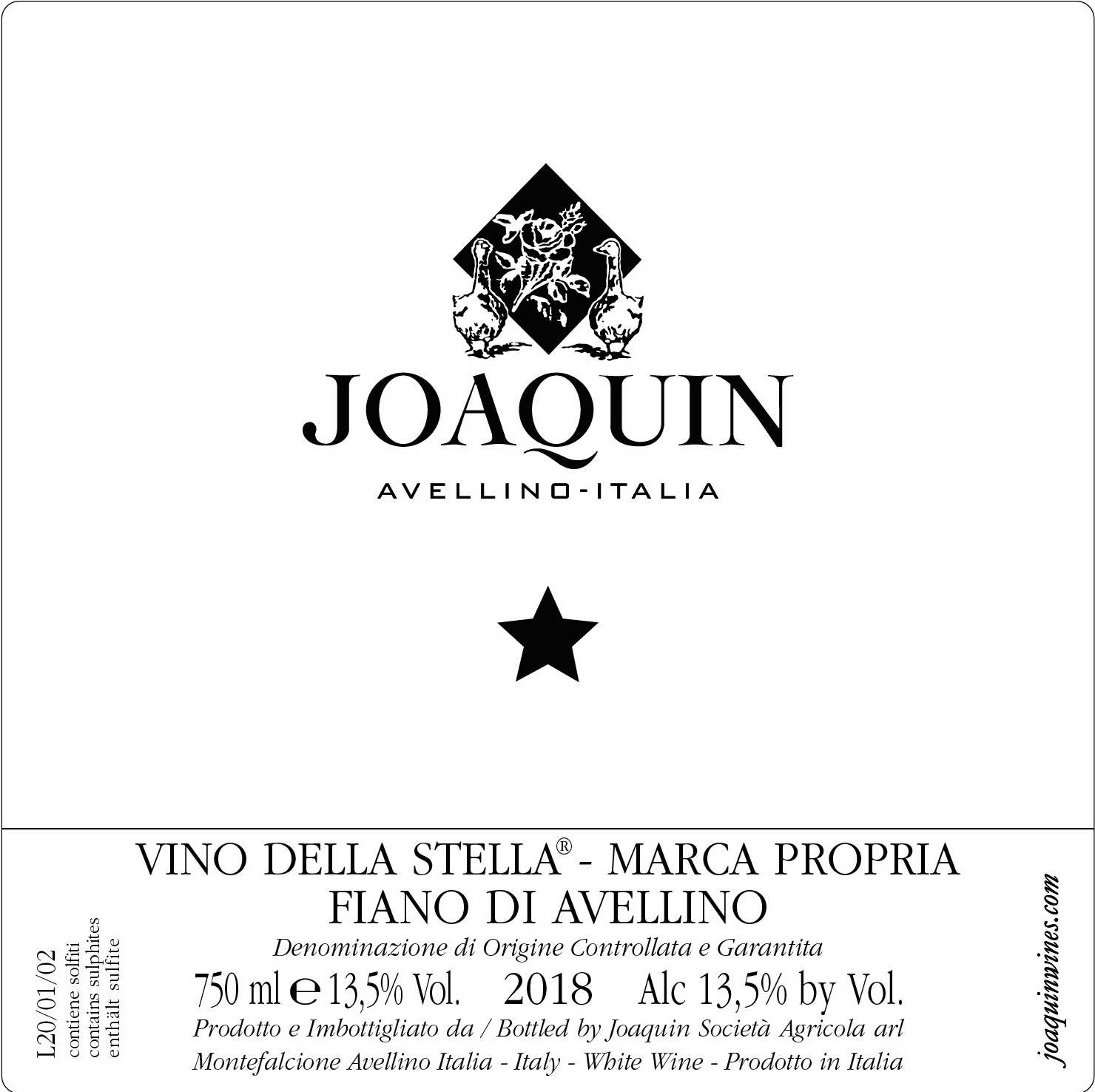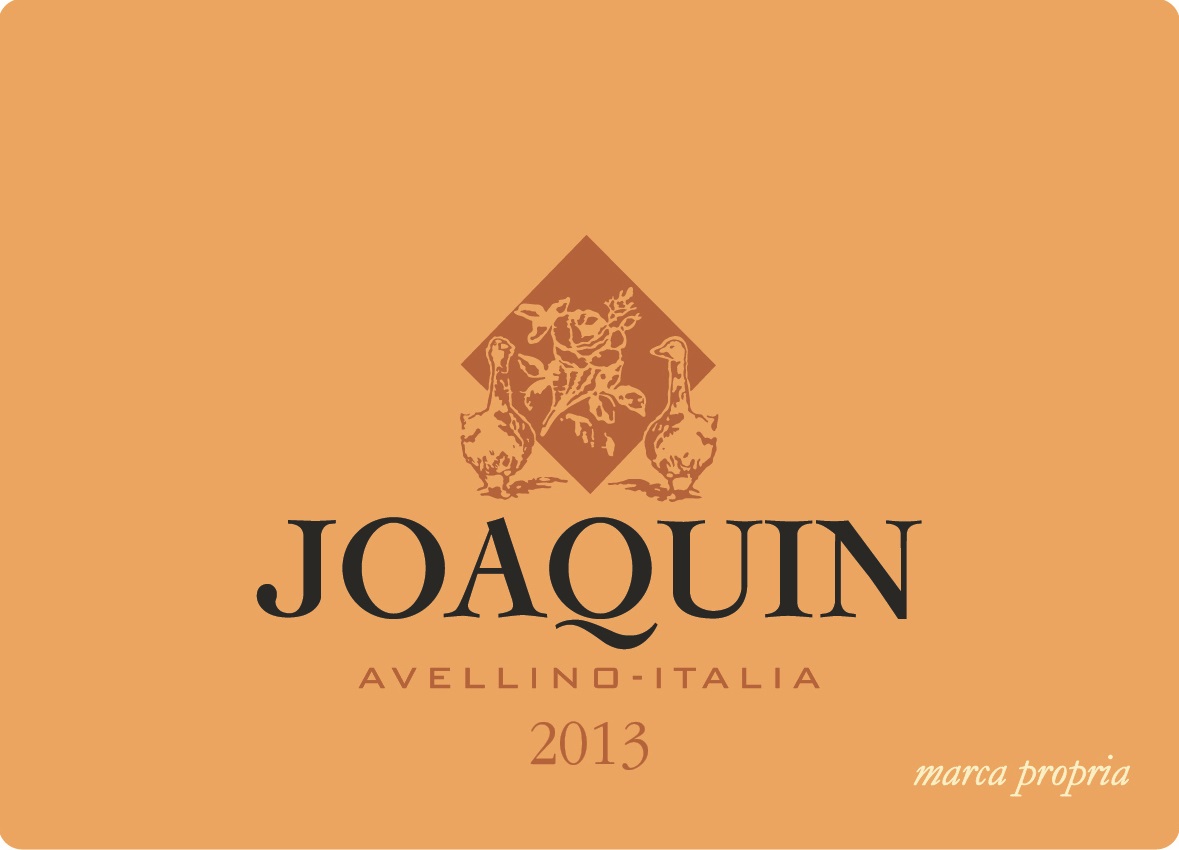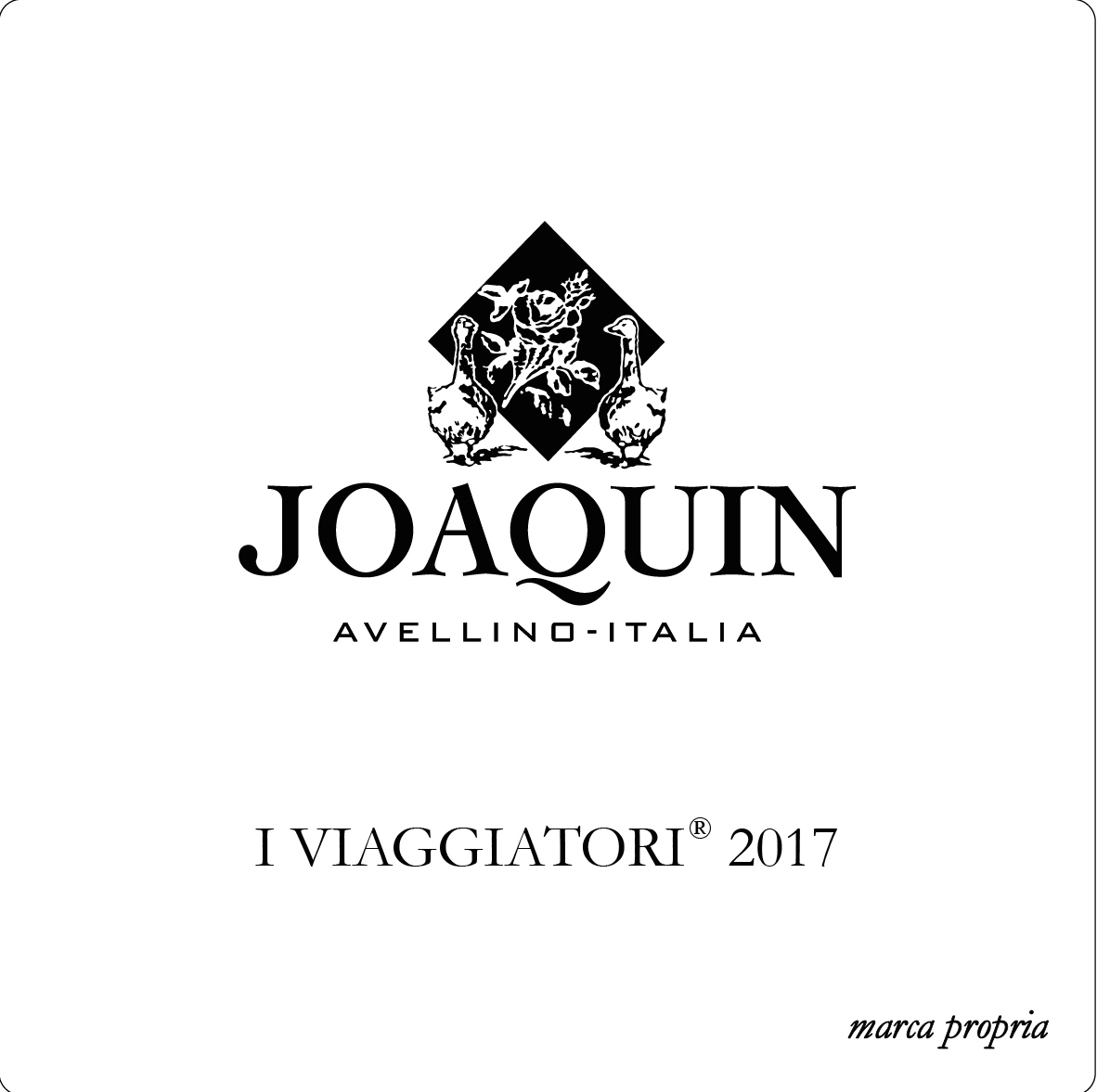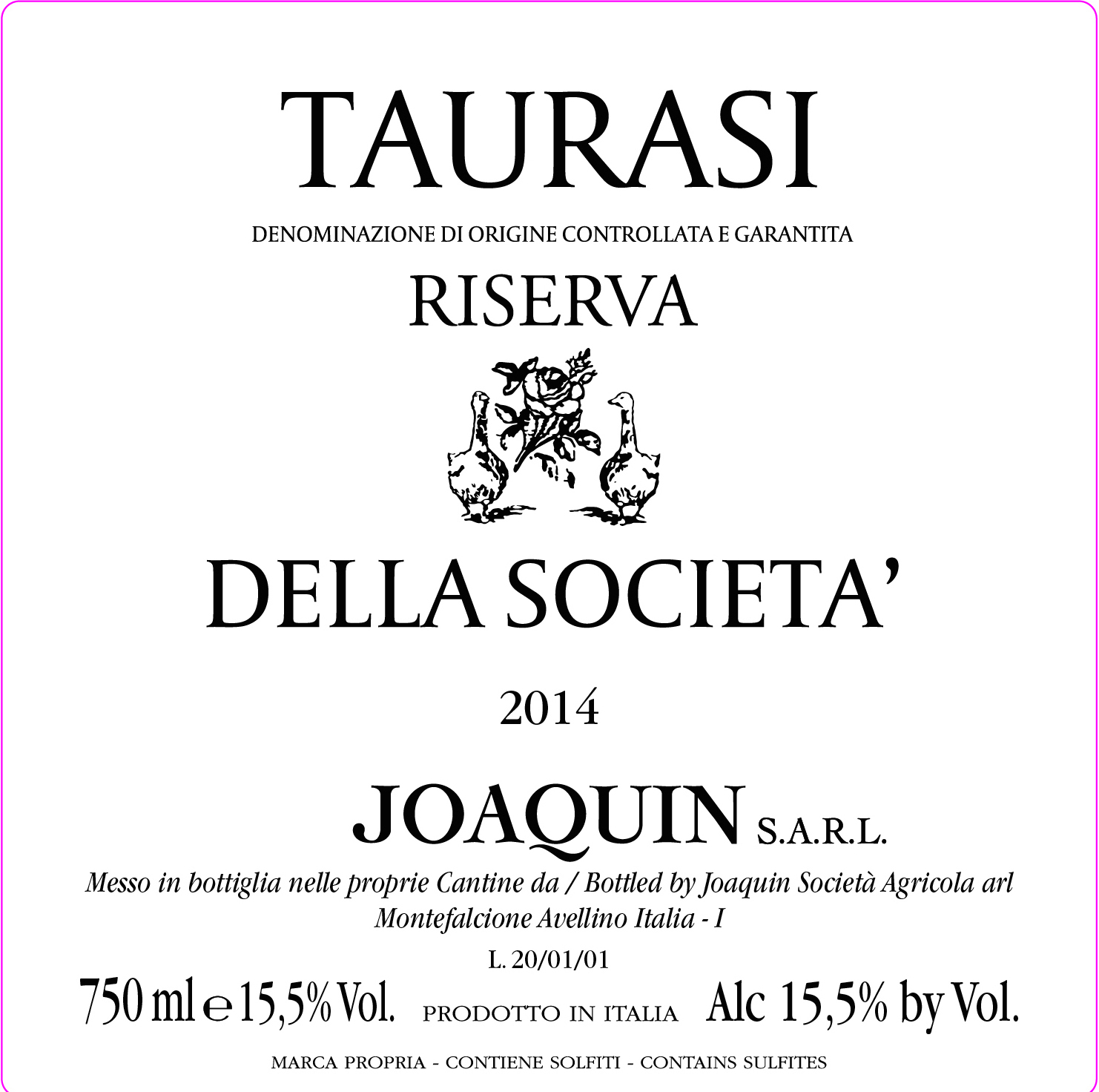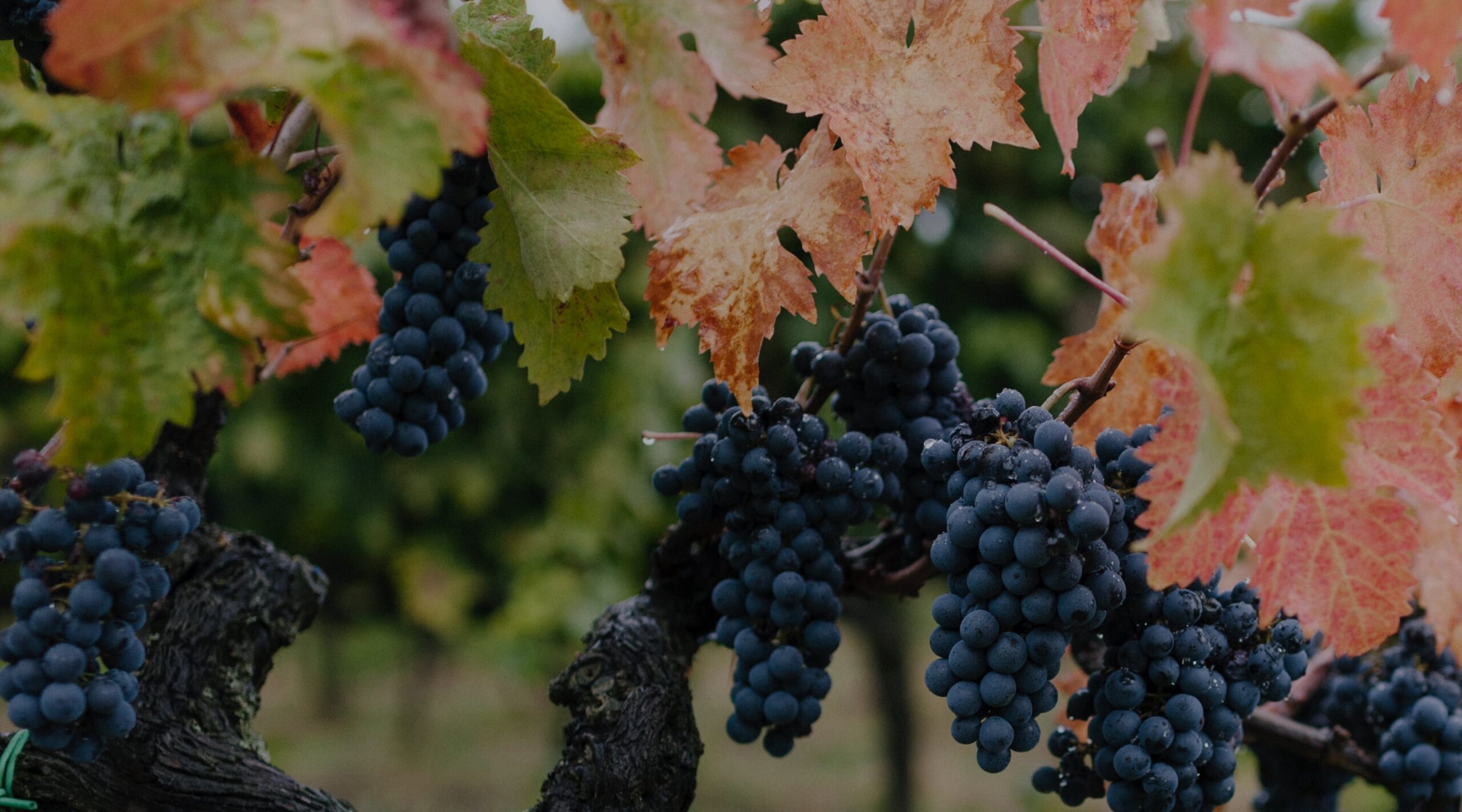
Joaquin
Wines
Montefalcione, Avellino
“Joaquin dall’Isola”, Campania Bianco
The glamorous highly touristic island of Capri, just off the Amalfi Coast, is home to a mere 20 hectares of vines, and Raffaele Pagano owns a 0.8-hectare parcel of co-planted Greco, Falanghina, and Biancolella here, from which he produces only about 1,200 bottles per vintage. “Joaquin Dall’Isola” (“Joaquin from the Island”) expresses Capri’s wind-buffeted limestone-rich terroir through Raffaele’s highly personal lens, as he co-ferments his varieties and allows them to macerate on their skins for five days before a six-month stint on the lees in non-thermoregulated stainless steel. Rich but not unctuous, mineral-saturated but not austere, this wine vividly evokes the sea in its whomping saltiness, yet possesses a sense of caressing serenity at its core.
“Vino della Stella”, Fiano di Avellino
This comes from a 0.9-ha. parcel of Fiano between 20–30 years of age planted in the volcanic clay-limestone soils of Lapio, a commune in the far eastern reaches of the Fiano di Avellino appellation considered not only the variety’s spiritual home but its greatest terroir. Lapio’s cool microclimate, high altitude, and huge diurnal temperature shifts allow for Fiano of exceptional precision and complexity, and Joaquin’s combines those traits with a magnificently concentrated palate which swells dramatically on the finish. The wine spends 8 months on its fine lees in steel and fiberglass without temperature control, and it undergoes an additional stint in bottle before release—a purposeful delay which allows the variety’s youthful floral aromatics to subside a bit while its signature note of toast begins to emerge.
“Piante a Lapio”, Campania Fiano
Raffaele’s “Piante a Lapio” is truly outside of category. Made from 80-to-100-year-old Fiano planted in Lapio’s high-altitude volcanic soils, it is fermented spontaneously in casks of chestnut and acacia from local forests, and aged in those same vessels for nearly five years with no topping up. Incredibly, it develops a yeast veil just as a Jura wine would, although “Piante a Lapio” is marked notably less by veil-derived elements than a Jura Savagnin. This unorthodox aging regimen manifests itself in a combination of breadth and salinity, but variety-typical notes of lemon confit and jasmine still manage to ring strongly through the wine’s manifold layers. A stunning testament to Raffaele’s unique vision, “Piante a Lapio” avoids any trace of gimmickry and comes across as a wholly singular and profound creation.
“I Viaggiatori”, Campania Aglianico
Joaquin's Aglianico holdings are the stuff of legend: 1.2 hectares of ungrafted pre-phylloxera vines between 150 and 200 years of age, trained high above the ground and spaced widely, with gnarled trunks and vast arms that reach across the rows. This astonishing parcel is located in the commune of Paternopoli, in the Taurasi appellation’s southernmost and coolest subzone. Raffaele produces a Taurasi DOCG only in certain vintages. In other vintages, he produces this declassified wine: “I Viaggiatori” (“The Travelers”), a gutsy but finesse-driven Aglianico. Aged in used oak barrels following a 15-day maceration in old open-top wooden casks, it combines tangy, resonant acidity with dark cherry fruit, and while the tannins are a bit punchy as per the variety, the lingering impression is one of freshness.
“Della Società”, Taurasi Riserva
“Riserva Della Società” (“Company Reserve”) is a bold, singular Taurasi of remarkable presence and depth, one which Raffaele only bottles in the best vintages, ageing the wine for a period more than double the appellation requirements—at least three years in previously used oak and acacia casks, plus an additional four or more years in bottle before release. It is rife with earth-derived aromas and flavors, evoking damp woods, cool herbs, and wild fruit, and manages to remain nimble despite a fearsome density.These remarkable Aglianico vines have spent between 150 and 200 years developing their root systems, disrupted neither by phlloxera nor by tilling. The resulting wine, though new to the RWM portfolio, is nearly certain to become one of our most iconic.
